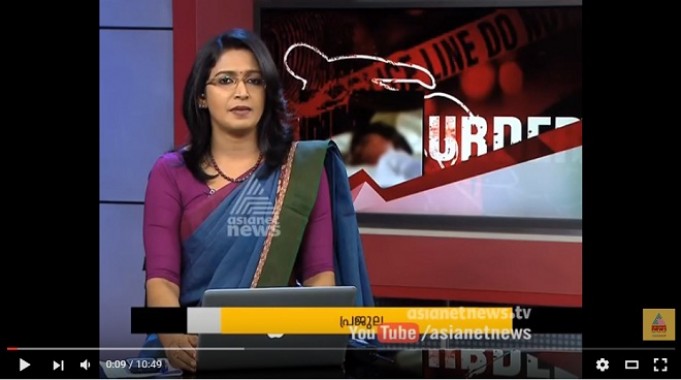Why is the media naming the Kerala rape victim?
Asianet News was among the TV channels which identified the victim.
In many respects, the rape and murder of a 30 year old dalit law student in Kerala last week was similar to the 2012 Nirbhaya case. Two major differences, however, are the delay in reporting the crime and the media revealing her identity and releasing a photograph of her.
The young woman was brutally raped and tortured last week. Like Nirbhaya, this woman also suffered intense brutality with her genitals being torn apart by a sharp weapon. Her face and neck also received deep and fatal injuries. It's not yet clear whether she succumbed to these grievous injuries or whether her body was mutilated after she was killed.
Her body was found last Thursday at her single room home near Perumbavoor in Ernalkulam district where she lived with her mother, a domestic help. It only came to public attention the following Monday, for reasons unknown, despite the police reportedly reaching the spot on the day of the crime and despite the existence of a vibrant media in the state.
Young people expressed their anger and anguish on social media platforms including Facebook and attacked the government and police for their apparent failure to trace the criminal. They also didn't spare the slow judicial system which many believe gives criminals the confidence to break the law. To drive home their point, they cited earlier rape and murder incidents in Kerala in which justice has been delayed or denied. A Twitter hashtag with her name, demanding justice, has attracted a lot of angry comments.
Leaving aside the public outrage against the crime, for both the national and Malayalam media, the issue is the disclosure of her identity.
According to IPC 228A “Whoever prints or publishes the name or any matter which may make known the identity of any person against whom an offence under section 376, section 376A, section 376B, section 376C or section 376D is alleged or found to have been committed (hereafter in this section referred to as the victim) shall be punished with imprisonment of either description for a term which may extend to two years and shall also be liable to fine.”
But the same section adds as “(c) where the victim is dead or minor or of unsound mind, by, or with the authorisation in writing of, the next of kin of the victim: Provided that no such authorisation shall be given by the next of kin to anybody other than the chairman or the secretary, by whatever name called, of any recognised welfare institution or organisation. ...”
There is nothing to suggest so far that the victim's family has given any such authorization for revealing her identity.
It remains unclear whether the rape victim's name first appeared on social media or the traditional media. What is very clear, however, is that the dividing line between them is thin, not just because of inadequate editorial judgment exercised by the print media, but also because of its failure to resist the pressure from social media.
On Tuesday, when the report first appeared in the newspapers, not even a single leading Malayalam newspaper took care not to publish her name. Malayala Manorama, Mathrubhumi, Madhyamam, Deshabhimani, Chandrika, Thejas - all identified the victim with her photo. Some republished her photo. Mathrubhumi online used her name in the headline. And, since the deed has been done, they continue to use her name and photo, presumably on the premise that, now the ‘’error’’ has been made, they might as well stick to it.
Are newspapers losing whatever good sense they have out of pressure to respond to social media? Under the influence of social media, are the traditional media making serious editorial errors to satisfy the perceived public outrage? In publishing the photo and name of the victim, they have violated both legal and moral principles but to what end? And to what extent is the girl’s status as a dalit from a very poor family connected with the very different treatment this story has received as compared with that of Nirbhaya? Are the poor less entitled to privacy than middle class victims?
Then there was television. Both Asianet and Reporter Live (which describes itself as the first journalist driven news channel in Malayalam), identified her by displaying the tell tale hashtag, the latter channel also showed her picture. While Asianet did take care to pixilate her face in some shots, they negated that precaution by showing footage of her relatives while interviewing them.
Among the national channels NewsX, CNN News18, India Today and NDTV 24X7 all identified her via the hashtag, even as India Today online took care to change her name. Times Now however displayed sensitivity by withholding the hashtag which would have identified her. One is grateful for small mercies.
Muhammed Sabith, a journalist based in Delhi, can be reached at sabith.muhemmad@gmail.com
